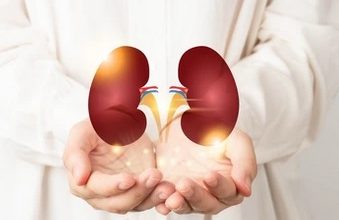Equitable health –A Steadfast approach to Sustainable Public health

Amidst the imminent struggles, trials and tribulations, the stage is set as we celebrate a landmark day, World Health Day on April 7. This day serves as a reminder of how far we have come to overcome obstacles and barriers while enabling and empowering the Indian health ecosystem through unfiltered collaboration and communication in the best interest of creating a more sustainable and secure healthcare system. While the nation reverberates in unison ‘Vasudhaiva Kutumbakam’, it reminds us of our unwavering commitment towards Universal health coverage and the fundamental human right to quality health services.
Health is deemed one of the most integral aspects of life! The WHO constitution states, “Health is a state of complete physical, mental and social well-being and not merely the absence of disease or infirmity. This declaration and dictum of complete balance is jeopardised by a host of factors from diseases to disasters. Conflicts and crises have become commonplace and living on the edge has become a norm in our societies! Despite health being a primary and basic right by constitutions of countries across the world, this dictum has come under the scanner in recent times. Equitable access to healthcare services has become a debate of discussion across the globe. In the wake of this, the theme for World Health Day was decided upon a very pertinent topic “My Health, My Right”.
It is an irrefutable fact that today our nation is pitted against an ocean of obstructive forces. “The challenges we face today demand a united front. Non-Communicable Diseases (NCDs) like diabetes and heart disease, the ominous rise of Antimicrobial Resistance (AMR), the persistent threat of infectious diseases, and the looming spectre of environmental risks require directed, decisive efforts,” opines Dr Akhilesh Sharma, President and Chief Medical Officer, Alkem Laboratories.
India has taken a comprehensive approach towards tackling the disease burden of NCDs head-on. The government has been proactive in giving NCDs top priority as part of their health mandate. One such example is the National Programme for Prevention and Control of Cancer, diabetes, Cardiovascular Diseases and Stroke, by way of which screening units will be installed across all primary health centres.
There is no denying that today we find our nation clouded by surmounting challenges, from being ninth on the global hunger index to even being christened as the diabetic capital of the world. However, the government has been working towards bringing about a shift in the health landscape and disease dynamics in our country. Efforts are underway to bridge the gap in health disparities across, socio-economic context, gender and caste.
A host of schemes and policies have been rolled out that address varied issues, like the Pradhan Mantri Jan Arogya Yojana which provides aid to the needy and access to healthcare services at a lowered cost, Pradhan Mantri Ujwala Yojana addresses mortality rates and incidence of asthma by providing clean fuel.
Dr Zeeshan Ali, Program Specialist, Physicians Committee for Responsible Medicine states that “Healthy and nutritious food is not just a privilege; it is a fundamental human right that forms the cornerstone of well-being.” To tackle issues about food security amongst the marginalised and adequate nutrition for school-going children, schemes like the Pradhan Mantri Kisan Samman Nidhi and Mid Day Meals programme were conceptualised.
Dr Ali says that access to proper nutrition plays a pivotal role in managing non-communicable diseases and forms a basic right of every individual. These are just a few of the many valuable schemes that are enabling millions across the country to not just survive but even thrive.
The World Economic Forum report states that while 28 per cent of the urban population has access to 66 per cent of hospital beds, the rest of the rural population has access to only one-third. The recent interim budget 2024 has addressed such issues with the announcement of new medical colleges and the establishment of 10 new cancer hospitals. Such proactive measures taken by the government help to address the dearth of medical professionals and affordable healthcare in rural areas.
The Indian healthcare landscape is a stark example of a system that has embraced change, has set its sights high and has taken proactive steps towards bringing about an overhaul in the system. At the recently conducted Global South Summit 2023, India has been vocal about their stance on taking the Indian healthcare scenario a notch up. The plan of action for bracing up the healthcare system in the 21st century would be to adopt the “One Health” approach, a comprehensive approach towards combating the rising public health concerns.
Private players have also pitched in to play a crucial role in combating the urban-rural divide to access affordable healthcare. Smriti Tandon, Co-founder of Online Chikitsa Mitra states that “For every 1400 patients, India has just 1 doctor.”Online Chikitsa Mitra, a rural healthcare start-up is one such platform that has strived to enhance medical accessibility to several rural districts while addressing this shortfall. Smriti states that in a bid to provide specialised healthcare in rural setups, they have established standardised telemedicine hubs in medical stores across various rural districts in India. Online Chikitsa recently announced the opening of 200 e-clinics across rural areas of Uttar Pradesh, Rajasthan, Bihar, Madhya Pradesh and Jharkhand.
Medibuddy, one of India’s largest digital healthcare platforms another online platform in the private segment that helps to connect doctors with patients in remote areas through online video consultations. Saibal Biswas, SVP, Head of Marketing, Partnerships & PR at MediBuddy states that “Medibuddy, envision a future where every individual has equitable access to healthcare regardless of their geographical location by providing online video consultation, remote diagnostics, and a vast network of medical partners.”
Sustainable and accessible healthcare will go a long way when technology is leveraged. The recent collaboration of the Indian government with WHO on the Global digital health initiative is a testament to the fact that India is committed as a nation to addressing pressing concerns and priorities. Technology and digitisation have served as indispensable tools to help India reach their sustainable health goals. As part of the Digital Public Health Initiative (DPI), a flagship programme under the Digital India initiative, eHealth and telemedicine have been harnessed to pave inroads into remote rural areas providing them with end-to-end medical services.
Smriti states, “Through telemedicine platforms, rural individuals gain access to regular health screenings, personalised education, and timely interventions for conditions like diabetes, hypertension, and cardiovascular diseases.”
Aarogya Setu, CoWin platform , e-sanjeevani and the Ayushmn Bharath digital mission are some of the few initiatives under DPI. “The government’s steadfast commitment to extending healthcare services to even the most remote areas is evident through the establishment of wellness centres, known as Ayushman Arogya Mandir,” opines Dr Vivek Desai, Founder & Managing Director, HOSMAC.
As implicated in the 2030 Sustainable Development Goals (SDG) a partnership between private and public players would be required to achieve Universal health coverage. The key to a robust health ecosystem would be to rope in the private sector players who are the channels towards innovations and initiatives. Aligned with the SDGs, one of the models that has stood out in the Indian sub-continent post-pandemic has been the PPP-Public-Private Partnership which was announced by the Union Minister Dr Jitendra Singh.
As part of one such PPP initiative, Narayana Hrudalaya has collaborated with the Karnataka government by kickstarting a project to boost farmers’ health as part of the Yeshasvini Cooperative Farmers Health Insurance Scheme.
Dr Vinod Ramani, Consultant Preventive Oncologist, Sammprada Hospital, Bengaluru opines, “A successful path to UHC in India includes sanctioning a realistic and affordable set of benefits, and revising it by the recovery of public finances.”
He further goes on to add, “In many developing countries, the private providers cater to the insured persons and the public sector facilities serve the deprived population. This leads to concentration of resources for the insured group, at the expense of those without coverage thus resulting in inequity of healthcare services.”
The 3 A’s i.e. accessibility, accountability and affordability have for long hounded the healthcare system, however, it is heartening to see how India has been bracing up. In hindsight the government believes that the future of the healthcare system lies in its preparedness and will be the game changer, it will be the key to a brighter and more secure future!




